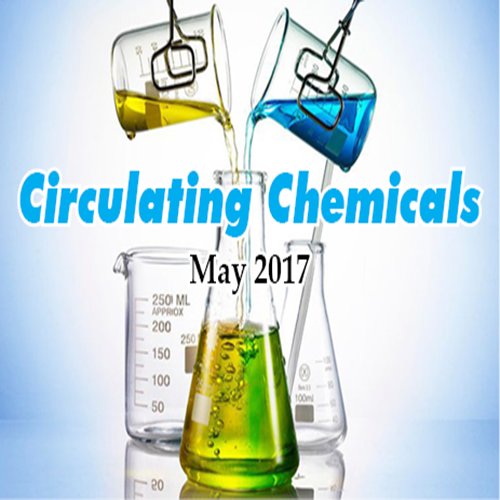Many new concepts and techniques have been emerging in recent times whose deployment in the chemical industry could make its processes and products sustainable and benign to the environment. One such concept is the Circular Economy or Cradle to Cradle. According to this concept manufactured products should have the prospect of its constituents being brought back as raw materials. This is the underlying principle of ‘Circular Economy’. In this column, Sahasranaman explains the importance of Circular Economy. He elaborates on the evolution of these concepts, its applications in industry and the challenges involved in its implementation.
Epicerol, Solvay’s branded Epichlorohydrin, is a unique product. It is manufactured using glycerol, a renewable feedstock, instead of the fossil-based propylene. However, what makes Epicerol unique is that it is the first product to be “CE-tagged”, for want of a better word. Ernst and Young have developed an ecertification program, by which downstream processors of Epicerol would be able to ascertain that their raw material originates from a renewable feedstock. Epichlorohydrin is as an important petrochemical, as it is a building block for epoxy resins, which find myriad applications, primarily in production of paints and coatings.
Glycerol is produced as a relatively worthless byproduct in large quantities during transesterification in the manufacture of biodiesel. “CEtagging” of Epicerol is thus a very good advertisement for Chemical Industry’s environmental responsibility, as it loudly and proudly proclaims how the wasteful byproduct of one process is reused as a raw material in another. This is not the first such instance of a recycle in the chemical industry. However, championed by Akzo Nobel, a leading manufacturer of paints and coatings, this message can be understood easily by the lay customers. It marks an important milestone of Chemical Industry in the world of Circular Economy (CE).
Circular Economy
Though the term Circular Economy was first coined by two British environmental economists, David Pearce and Kerry Turner in 1990, it is more meaningfully associated with the “Cradle to Cradle” concept enunciated in 2002, by Dr Michael Braungart, a German chemist and William McDonough, an American architect. Underlying this concept is the utopian dream, that every manufactured product can be broken down to recover its constituents, which can then be reused to make new products. The R’s of Reduce, Reuse, Repair, Replace and Recycle are at the heart of CE. In 2010 Ellen MacArthur Foundation, named after the famous English long-distance yachtswoman, was established and has quickly emerged as the global thought leader on CE. Under the Foundation’s vision, Circular Economy is a complex umbrella concept, which is threatening to become a buzzword. Underlying this concept are some rather simple tenets that sound bombastic. One of these tenets is preserving the value of natural capital. The Epicerol story is a glorious illustration of this principle. The challenge before chemical industry is to invent more such processes that will use bio-based feedstocks. “Using renewable feedstocks” is inwp972entally the Seventh Principle of “Green Chemistry”.
Chemical Leasing
Much before Ellen MacArthur Foundation created a framework of ground rules for CE, chemical industry found itself pitchforked into the centre of Circular Economy through Chemical Leasing Model (CLM), a bold and brilliant joint initiative by United Nations Industrial Development Organisation (UNIDO) and the Austrian Ministry of Environment. In this model postulated in 2004, the supplier of chemical continues to retain its ownership. It is a disruptive business model, in which chemicals are sold on the basis of performance and not on weight or volume basis. Paints and coatings are paid for, not by litres or kgs, but by the area covered. Echoing Schumacher’s “Small is Beautiful”, profits don’t depend on higher volumes, but less. Since environmental safeguards can be written into the performance criteria, the onus lies on the supplier and not user. CLM has successfully accomplished two important goals of CE – resource optimisation and waste minimisation. The story often told to illustrate the success of CLM is that of a factory manufacturing metal components for the automobile industry. The metal parts had to be cleaned, for which the company used large quantities of perchloroethylene, a hazardous solvent, which eventually found itself in the waste streams. The company then switched to CLM, in which the goalpost was shifted to pay not for the quantity of chemicals bought, but as per the operating hours of the cleaning machine. This forced the chemical supplier and the cleaning machine manufacturer to revisit the cleaning process and optimise the chemical consumption. They also installed a distillation unit to recover the solvent from the waste stream.
Dow and BASF are among the leading chemical producers who have adopted the CLM. Automobile majors like Volkswagen, Volvo, Toyota, Ford and General Motors are some of the CLM customers, who have outsourced the management of their paintshops to chemical companies.
Recycling Chemicals
Unlike the construction industry, where steel and glass or brick and mortar can be separated from each other with relative ease, products made out of chemicals cannot be easily broken down into its constituents. Further steel is very easy to be reused. The steel salvaged in Alang ship-breaking yard is reused for construction and even by capital goods industry. Steel is in fact the ambassador of Circular Economy; it is classified as “permanent material” in CE jargon. Plastics are a different kettle of fish. What would be the impact of additives when a plastic is de-polymerised? How will they influence properties and performance when the constituents are re-polymerised? We need answers to such difficult questions. For chemical industry to be 100% CE-ready, great advances are required in material science and engineering. We need to develop new materials that can be easily broken down into its constituents at the end of the product life. We need to develop new technologies to breakdown existing materials into their building blocks. This will take decades. Experts estimate Circular Economy will take 50-70 years to mature.
Epicerol
Let us revisit Epicerol, the first chemical product with the capability of being tracked throughout the supply chain. Here is why I think it will be an important trendsetter. Our cities have stores, where welloff people pay more to buy organically grown foodstuffs. They do it not so much for taste as wanting to be seen to do their bit for the environment, either of their own volition or due to peer pressure. Their heightened awareness about environment helps them make this choice. I foresee similar stores for consumer products, where people will pay a premium to buy a toothbrush made out of plastic from renewable feedstock. The “CEtagging” of chemicals would have paved the way for such a scenario.
Readers’ responses may be sent to k.sahasranaman@gmail.com or chemindigest@gmail.com

































